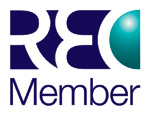MNR is an independent company which carries out high quality, bespoke recruitment and administration services for its Clients worldwide.
MNR has for over ten years provided its specialised services to the marine and offshore industry earning a reputation for excellence, reliability, hard work, being able to meet and exceed Client requests.
With MNR’s expansion into the Far East it is now in a position to strengthen its position, as a worldwide recruiter and marine administrator.
Due to the high level of in-house marine expertise MNR is able to fully understand its Clients requirements and provide administration solutions or candidates that completely meet the Client’s needs.
Seagoing, Shore and Offshore staff registered with MNR have placed their CV with a company that deals directly with a large high quality group of Clients which represent many aspects of the marine industry.

 MNR offers its Clients realistic recruitment fees and a recruitment service by its experienced maritime staff, that is truly one which strives to provide the Client with candidates that match its requirements not one that simply forwards CVs.
MNR offers its Clients realistic recruitment fees and a recruitment service by its experienced maritime staff, that is truly one which strives to provide the Client with candidates that match its requirements not one that simply forwards CVs.
MNR’s administration department provides expertise that many Clients have found highly competitive in cost and competence. MNR handles the administration functions for all European, Russian and Former Soviet Union countries removing the need for expensive local offices in those countries whose practices may not complement the Clients activities.





